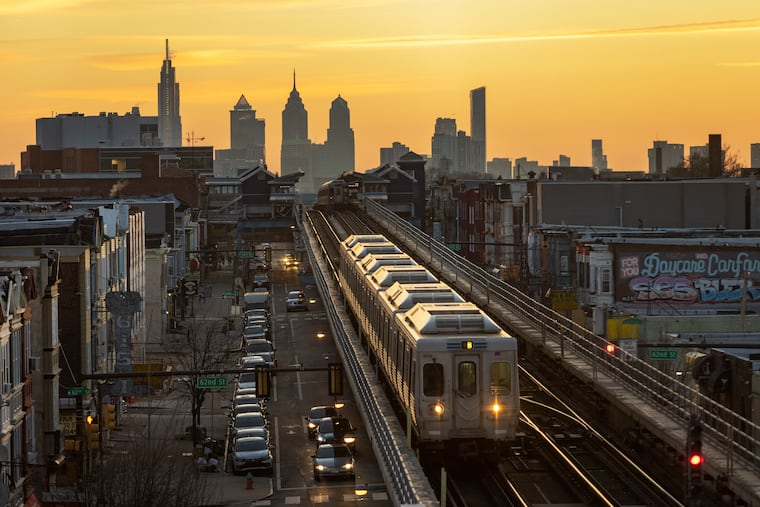4 takeaways from new census data on population change in Pennsylvania and New Jersey
Pennsylvania, the country’s fifth-most-populous state, lost about 40,000 people between July 2021 and July 2022, according to census data released last week. Its neighbor New Jersey lost about 6,000.

Pennsylvania, the country’s fifth-most-populous state, lost about 40,000 people between July 2021 and July 2022, according to new Census Bureau data. Its neighbor New Jersey lost about 6,000 residents in the same period.
The reported losses come as the United States overall experienced a modest 0.4% increase in population, largely driven by international migration that picked up after having plummeted at the start of the coronavirus pandemic and supplemented by the largest year-over-year increase in births since 2007. Even so, the country’s population is growing at a historically low rate.
The data released last week come from the Census Bureau’s Population Estimates Program (PEP), which uses multiple data sources, including vital records, to calculate population change each year by adding birth and migration numbers while subtracting deaths. These numbers, however, are estimates, and one expert cautioned against reading too much into data that are subject to change.
Here are four takeaways from the data.
After a long decline, births increased in Pa. and N.J. But deaths offset some of those gains
For the past decade, births have been steadily declining in Pennsylvania and New Jersey, but both states saw a bump in births between July 2021 and July 2022, according to the latest census numbers.
The two states weren’t alone. The country saw the largest year-over-year increase in total births since 2007, according to Kristie Wilder, a demographer in the population division at the Census Bureau. That rise in births helped fuel the modest national population growth.
Still, neither Pennsylvania nor New Jersey could buck the continued number of deaths fueled by the COVID-19 pandemic.
Pennsylvania and 23 other states experienced what the census calls a negative “natural change” — meaning deaths exceeded births. Deaths were largely to blame for Pennsylvania’s population loss, exceeding births by about 56,000. Only Florida had a larger difference.
Meanwhile, New Jersey’s births exceeded deaths by almost 20,000 — one of 26 states to record a positive natural change. But the increase in births compared with previous years was not enough to offset domestic migration losses.
Immigration was a boon to the U.S. population. Domestic migration hurt Pa. and N.J.
All states benefited from positive net international migration, which added more than 1 million people to the U.S. population and eclipsed the country’s positive natural change of about 245,000 people. That brought the country’s population close to 333.3 million people, up from slightly more than 332 million.
Pennsylvania saw almost 27,000 international immigrants added to its population, but the newcomers could not make up for the roughly 40,000 people who left for other states.
New Jersey experienced a similar pattern. It gained some 39,000 residents through international migration, which was not enough to offset the 64,000 residents who moved to another state.
Kevin Gillen, senior research fellow at Drexel University’s Lindy Institute for Urban Innovation, said the domestic losses are “concerning but not terrifying” and make sense given the options COVID-19 has given professionals who have continued to work remotely.
“That’s going to force states and cities to become much more competitive with each other, to not only attract those households who are white-collar professionals and have relatively higher income but just to retain existing households that constitute a big part of the tax base,” he said.
It’s not just Pa. The Northeast continues to experience a population decline.
Pennsylvania’s and New Jersey’s losses mirror others seen in Northeastern states. The region, which also includes Connecticut, Maine, Massachusetts, New Hampshire, New York, Rhode Island, and Vermont, saw a 0.4% population decline, largely attributable to the negative net domestic migration.
The Northeast’s losses have become gains for the South and West, which experienced growth between 2021 and 2022.
These numbers are subject to change
Ben Gruswitz uses census data for socioeconomic and land use analytics at the Delaware Valley Regional Planning Commission, but he said he’s reluctant to “make hay” out of PEP numbers.
This time last year, PEP census data said Pennsylvania had lost more than 25,000 residents in a year between July 2020 and July 2021. But corrected data of those numbers show Pennsylvania actually gained more than 17,000 people.
These current estimates will similarly be adjusted as more data are collected. Gruswitz said he believes that the Census Bureau will “have more uncertain data during uncertain times,” so he doesn’t take much stock in the numbers.
“Will they revise that loss to a gain at this time next year? It’s hard to say,” he said.